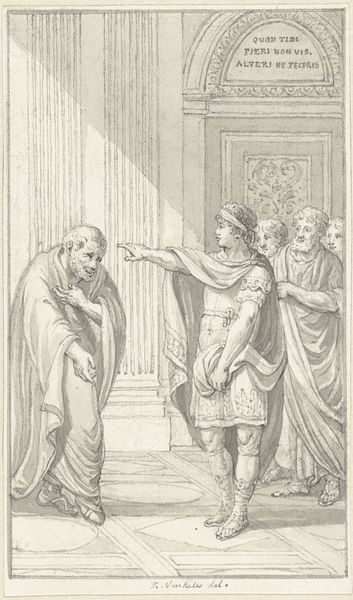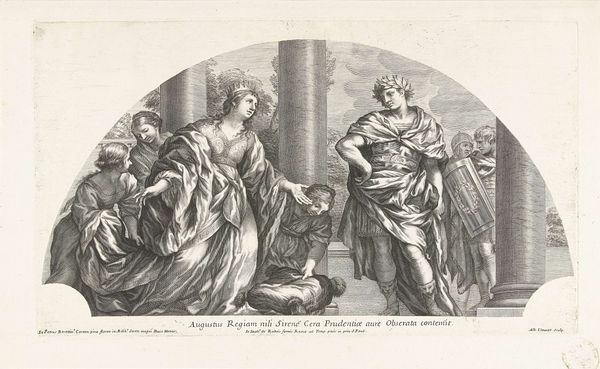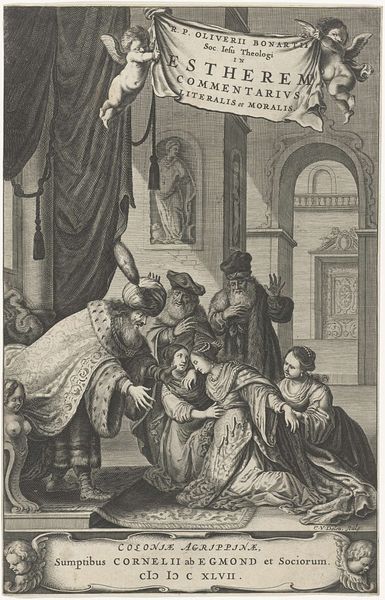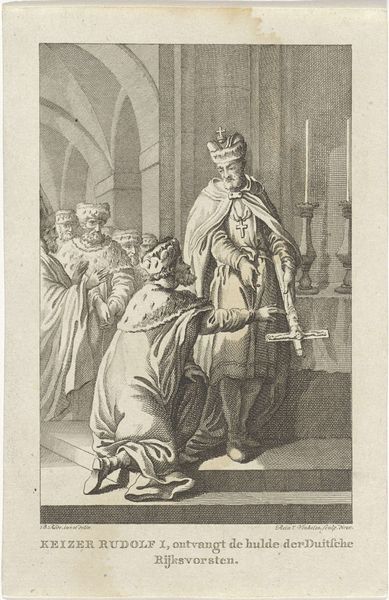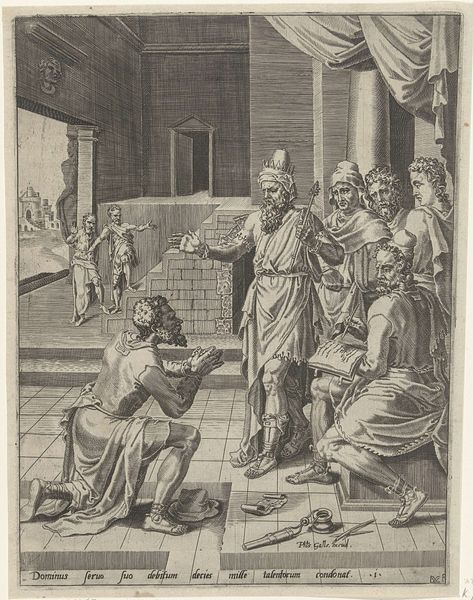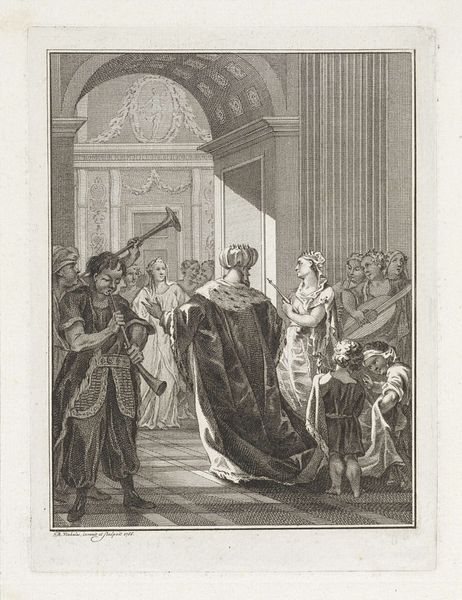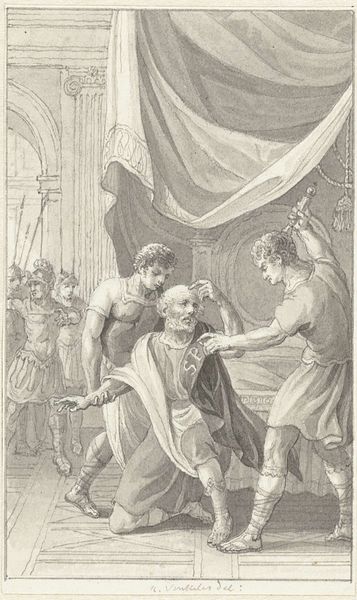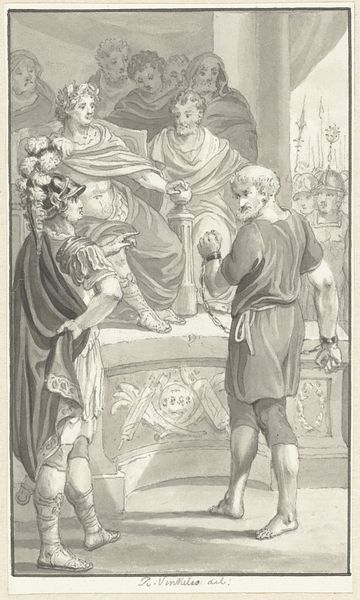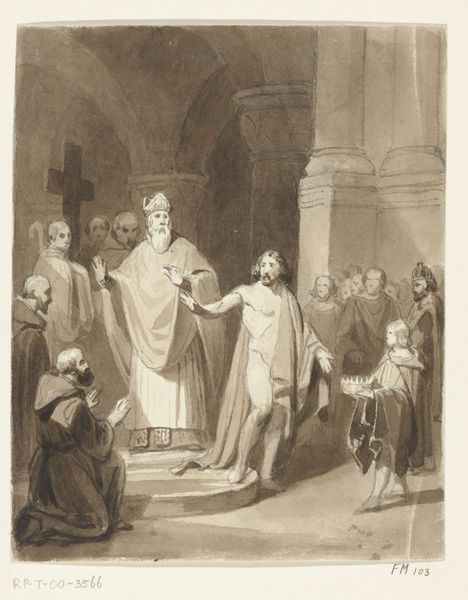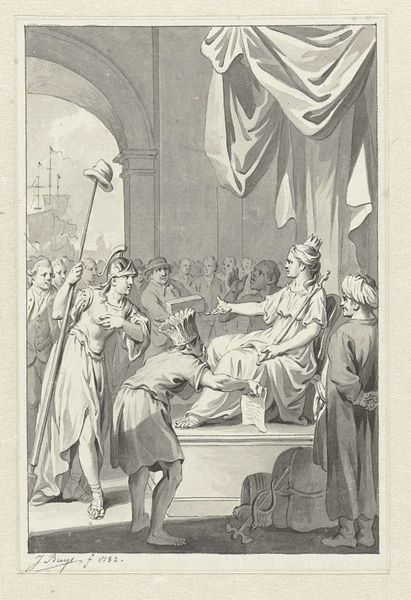
engraving
#
portrait
#
neoclacissism
#
allegory
#
caricature
#
portrait reference
#
history-painting
#
engraving
Dimensions: height 137 mm, width 83 mm
Copyright: Rijks Museum: Open Domain
Editor: Here we have Ludwig Gottlieb Portman’s engraving, “The Arrogance of Nero,” created in 1804. The scene is fascinating; it depicts a ruler bestowing a crown upon another, but something about Nero’s posture, the way he's seated above the other figure, feels incredibly loaded. How do you interpret this work, especially given its Neoclassical style? Curator: It's interesting to consider how the visual language of Neoclassicism is deployed here, right? On the surface, we see a return to classical motifs – Roman dress, architectural elements – but this isn’t a straightforward celebration of antiquity. Instead, Portman uses this visual vocabulary to comment on power and its potential for corruption. Editor: Corruption in what way? Curator: Well, Neoclassicism, particularly during the Napoleonic era, was often used to legitimize authority, to associate contemporary rulers with the perceived virtues of the Roman Republic or Empire. Here, Portman seems to be doing the opposite. He depicts Nero, a figure already associated with tyranny and excess, enacting what looks like a hollow ritual. Look at the way the scene is constructed. Who benefits and for what reasons? Is the focus on one man's gain? It is a very pointed commentary. Editor: So it's almost as if Portman is using the style of the powerful to critique the abuse of power. Curator: Precisely! By presenting Nero as arrogant, Portman is making a statement about contemporary leadership. He may be pointing out a disconnect between the idealized vision of Neoclassicism and the realities of political ambition, especially as Europe was reshaped by conflict and empire-building during his lifetime. He wants to use imagery of Rome to speak about politics of his time. What do you make of the statue above Nero's head? Does this symbolize that others may try to strike him down for his beliefs? Editor: I hadn't considered that possibility! The layers of commentary that this piece seems to have are remarkable. I will look for this whenever visiting historical exhibits in museums. Curator: And that is the power of examining the socio-political forces shaping the image. Looking closely at historical context changes how you interpret everything, doesn't it?
Comments
No comments
Be the first to comment and join the conversation on the ultimate creative platform.
